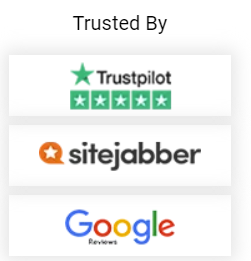Types of employee benefits
Healthcare Cover Benefits
Healthcare benefits refer to employer-provided medical coverage, including insurance, wellness programs, and preventive care, aimed at supporting employees’ physical and mental well-being. Organisations’ healthcare packages include medical insurance coverage, dental services, mental health services, and wellness programs (Thompson, 2019). Organisations frequently offer their staff private health insurance coverage through employee benefits to ensure workers obtain healthcare services without financial burden.
Merits of Healthcare Benefits:
Organisations that offer healthcare benefits experience improved employee health because their employees receive better physical and mental care, which lowers their stress levels and decreases their absence from work. As a result of being healthy, workers demonstrate increased focus and productivity, which generates better organisational performance. Organisations with competitive healthcare plans succeed in attracting and retaining the best industry talent, which improves their overall candidate appeal (Hoffman et al., 2021). Through broad healthcare packages, Google and Microsoft strive to satisfy employees and maintain loyalty. Preventative healthcare initiatives that focus on mental health and wellness reduce long-term sickness-related worker absences and reduce organisational costs. Healthcare investment leads to more enthusiastic workers, driving better business outcomes and environmental sustainability. Lower employee morale and a high turnover rate at GreenFriendlyEco UK mean that introducing comparable benefits can make it clear that management values its workforce (Ogbonnaya et al. 2021). At a time when health concerns are high, such plans help establish trust, boost teamwork, and reduce turnover, thanks to the caring and strong workplace they provide.
Career Counselling and Development Support
These benefits include access to coaching, career planning, training opportunities, and educational support.
Merits:
Career counselling is necessary because it helps individuals within the organisation identify their strengths, set goals, and learn from their experiences, thus improving their employment prospects (CIPD, 2022). Unilever’s “Future Fit” drive ensures employees receive personal support, which helps them remain with the company and move into higher roles. Likewise, “Your Learning” from IBM helps employees continue developing the skills required by the business (Reed.co.uk, 2022). At GreenFriendlyEco UK, where both turnover and employee satisfaction are key, introducing such a program will likely boost engagement and loyalty. If there is a clear and backed way for employees to progress, they usually remain on board and add to the company’s success, creating a workforce of skilled individuals.
Profit-Sharing
Profit-sharing is a scheme where employees receive a portion of the company’s profits based on overall financial performance. This benefit directly links employee efforts to business success.
Merits:
Companies with profit-sharing schemes have witnessed a sharp rise in workplace motivation and productivity levels, as employees can directly participate in the company’s success through financial rewards that activate greater organisational engagement (Cite). The employees increase work efficiency because they understand their daily contributions lead to improved business results and better pay. For instance, Home Depot’s ‘success sharing’ has been ongoing for 20+ years. The biannual bonus plan is for eligible associates, rewarding them with extra money when their store meets or exceeds its sales goals (Home Depot, 2022). Home Depot has reported that the Success Sharing program has helped to reduce associate turnover and also boosted teamwork as employees work together to achieve sales targets (Home Depot, n.d). Through profit-sharing, employees collaborate on team-based efforts to enhance work productivity, thereby increasing company profitability and strengthening the group accomplishment mindset. For GreenFriendlyEco, Sharing profits between employees will help create employee loyalty by enabling employees to maintain their dedication to the organisation, decreasing employee departure rates (Shifrin & Michel, 2022). Profit-sharing will also establish a direct connection between employee interests and organisational objectives, which creates circumstances for advanced strategic thinking and cost management, leading to sustainable development and market competitiveness. This results in a shared sense of responsibility for continuous enhancement.




